“I treat Côtes du Rhône producers a bit like Indian restaurants. I go in, try the lamb rogan josh, if they nail that then I know they’re good, and I’ll be back to try the rest of the menu,” writes Turner.
Well I have to admit, I don’t think I’ve ever known so much to happen in the gap between me attending a tasting day and getting my arse around to writing it up!
Flint Wines’ tasting on Tuesday 10th March at Lindley Hall was my last day in London for what looks like a little while as the world deals with the virus that has brought us all to a standstill. But given the increase in business for online wine retailers (as parents look to cope with days on end with the little darlings home from school) it’s not the worst time to be writing up any trade tastings right now!
I signed up for this tasting for a couple of reasons. Flint Wines isn’t an importer I had any real affinity with beforehand but, since hiring the brilliant Kirsty Savory from Wine Australia to run PR and marketing, they’ve been increasingly on the radar. And when she sent me the email with the masterclass line up? Well, I was in like Flint!
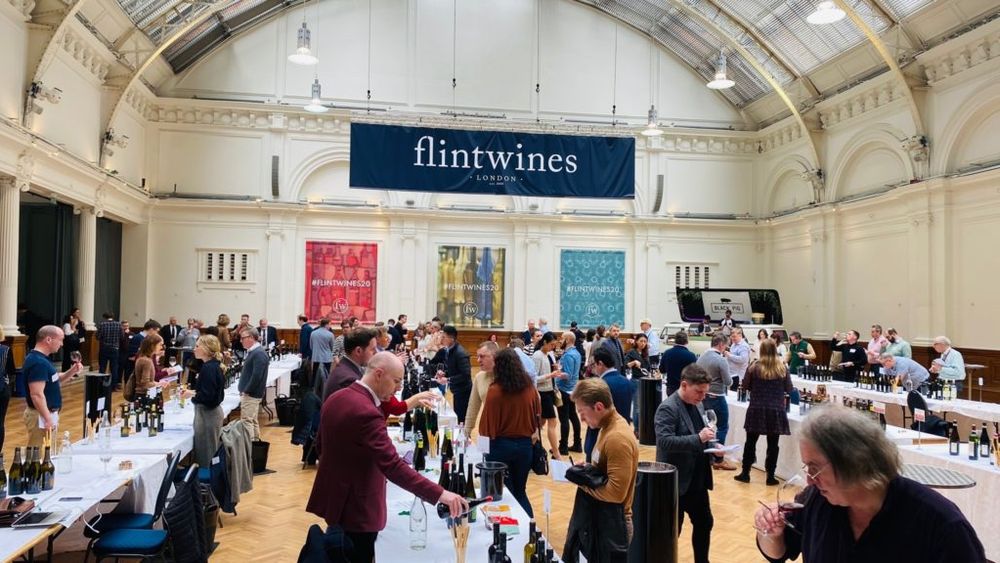
Flint Wines portfolio tasting, Lindley Hall, London, March 10, 2020
Sommelier focus
Gearoid Devaney MS is celebrating 10 years as a director of the company this year, and the day had the stamp of ‘sommelier focus’ all over it. From blind tasting secrets with Master Sommelier giants Ronan Sayburn and Stefan Neumann, all the way to a walk-through the best white wines of Italy, it had attracted a veritable who’s who of the “somm world” of London, or at least those not already in lockdown.
Messers Sayburn and Neumann inevitably ran over their allotted hour slot. Of course they did. I maybe speak for most of the attendees in that I could have sat there for another hour and not been bored. These guys are up there with the best sommeliers in the world. I’m assuming that Gearoid’s contact book helps massively when organizing these things, but it’s the overall idea of having such practical help on offer at a trade tasting that’s so impressive.
To not just be trying to flog more of your wines and to build those relationships with restaurant buyers is the better strategy in the long run.
Maybe one slight drawback in getting two wonderfully famous sommeliers to run the first masterclass is the nerves of the audience to proffer their own opinions when prompted. “What are you getting here? Has that seen some oak? What about the lees management?” Well luckily they had yours truly in the audience who can’t cope with silence, and turned into that lass from Blockbusters back in the day that just buzzed for every question. Unfortunately I think my success rate was about as good as hers, but the somms in the audience happily piled in as well, and the conversations that cropped up contributed to one of the best masterclasses I’ve ever been to.
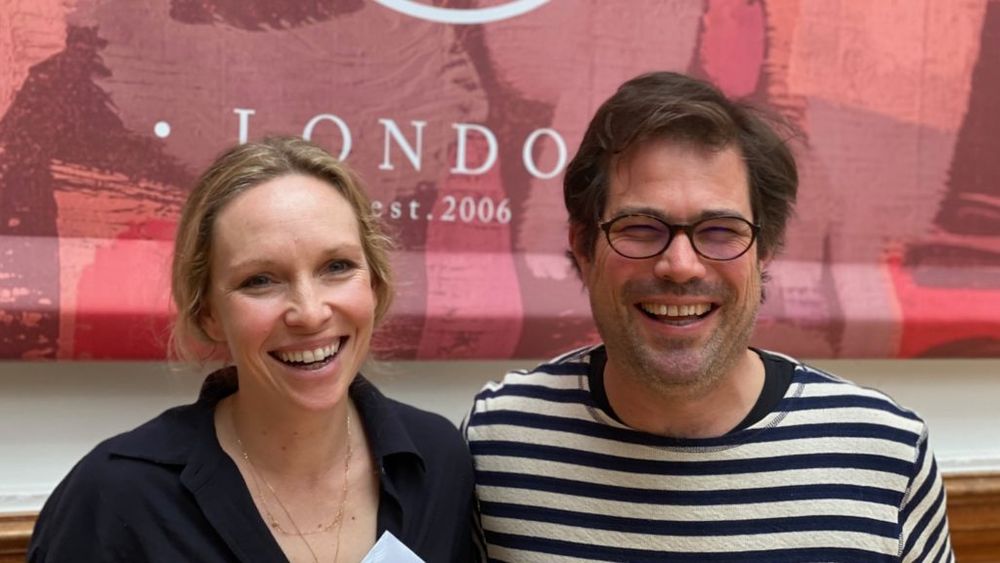
Nicolas Haeni of Malmont in the Rhône Valley, and Diana Snowden of Snowden Vineyards in California
Sustainable practices in Europe and America
OK, so maybe shouting out answers of varying degrees of correctness in a sommelier masterclass isn’t my bag, but quizzing winemakers on sustainability drives across the world is. Nicolas Haeni of Malmont in the Rhône Valley, and Diana Snowden of Snowden Vineyards in California were on hand to discuss the cutting edge of sustainable practices in Europe and America.
Nicolas spoke much about how biodynamic viticulture is helping to combat the heatwaves increasingly experienced in the Rhône Valley. 43 degrees in the Southern Rhône last June? Those reliant on sulphur treatments and short termist fertilisers are in for a nasty shock.
Diana had me at the magic words: “Roger Boulton”. For those that don’t know this guy, he’s a professor at UC Davis that has dedicated the last few years of his life pushing the envelope of the carbon footprint of the wine industry. I heard him talk at last year’s New Zealand Wine Sauvignon Blanc Symposium in Blenheim, but Diana completely trumped that as she was lucky enough to study under him at UC Davis. The seed was planted for me of the sustainability of what we’re doing, not just in the vineyards, but on this planet.
But for Diana it was the Californian wild fires of 2017 that really hit home. All of a sudden she realised that she was luckier than her own children, and was massively upset by that. Her ethos is to concentrate on reversing our impact on climate change, both in her family’s vineyards in Napa and at her interests in Burgundy. If only everyone can, like Diana, wake up to the disaster facing us if we don’t all act soon.
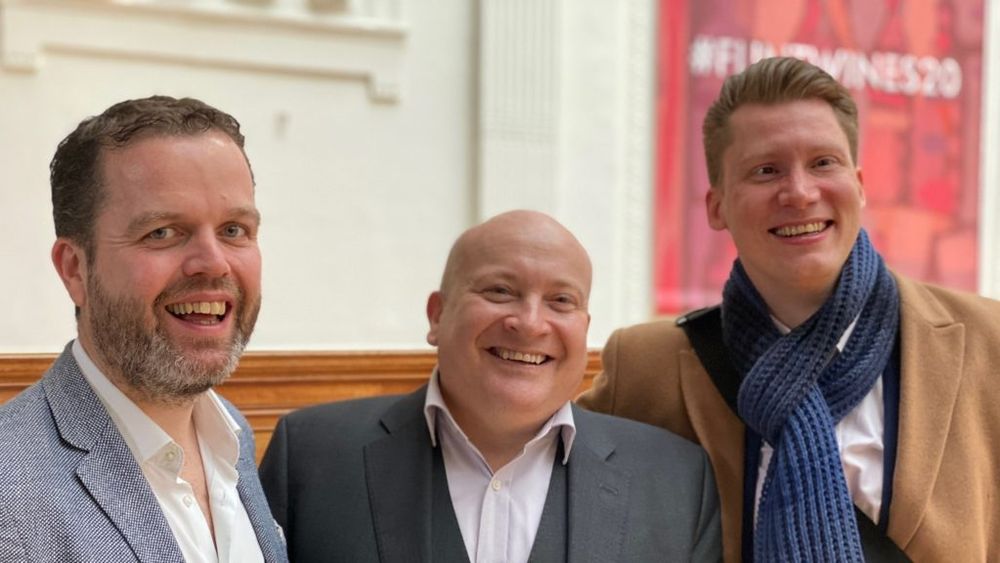
Three giants of the sommelier world: Flint’s Gearoid Devaney MS, Ronan Rayburn MS and Stefan Neumann MS
White wines of Italy
On a much lighter note, the masterclasses were finished off with a look through the white wines of Italy. So often overlooked compared to Italy’s reds, it’s great to see producers in Italy gain the confidence that they can not only produce great whites, but equally as importantly, they can sell them too! Grape vatieties like Arneis, Friulano, and Verdicchio are capable of hitting the heights if grown in the better sites of Piemonte, Collio, and Marche.
Special mention must go to Stefano Almondo of Giovanni Almondo in Piemonte for being the winemaker that made the trip. Given Italy shut it’s borders 30 minutes after his flight to London took off, I can only hope he made it back OK.
I’ll be honest, the masterclasses did take up most of my day, but I also managed to make it round the tasting in the spare hour or two in between. The COVID-19 impact was already being felt, of course, with few winemakers making the trip and a notable drop in attendees, but given what’s happened since then and what we increasingly know, that showed a lot of foresight. The consolation I have is that if this was my last trip to London for a good while then it was for a thoroughly interesting and thought-provoking day. Thanks to all the Flint team, and good luck to everyone out there in the coming weeks.
Cheers
Mike’s mixed case – My favourites of Flint
As I mentioned, most of my day was taken up in the masterclasses, but I did manage to get round most of the tasting and picked out some of my favourites for you lovely people.
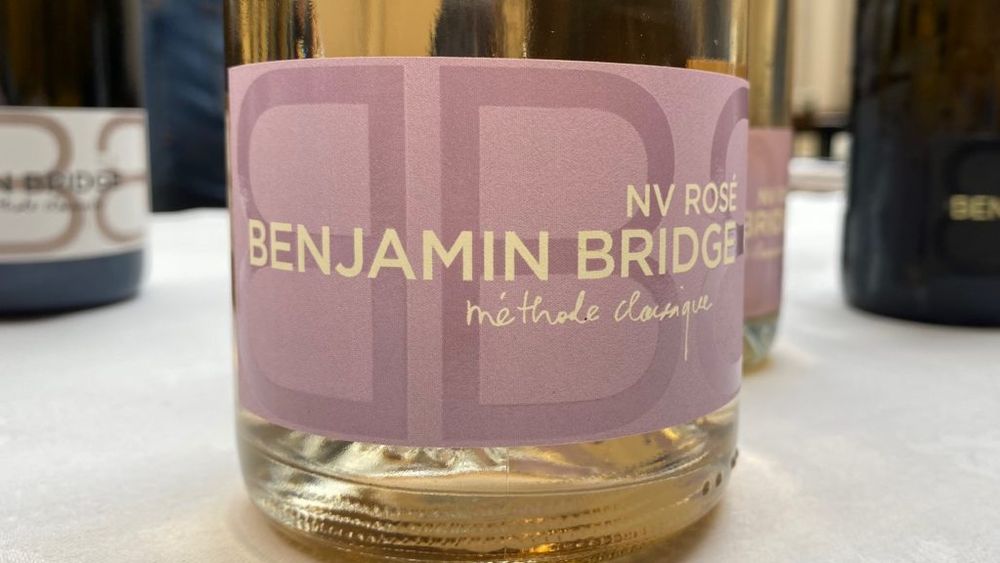
Benjamin Bridge Brut Rosé NV, Nova Scotia, Canada, organic (DPD £15.45)
New one to the Flint portfolio, this organic producer concentrates on traditional method sparkling wines. Its Brut NVs are a mix of L’Acadia, Seyval Blanc, Pinot Noir, and Chardonnay. I’d be lying if I said I was enamoured with the White Brut NV, but the NV Rosé was a lovely drink! Slightly under-ripe redcurrants and cranberries, bitter underlay, chalky minerality, and a touch of tannic grip. Really pretty, light orangey salmon colour to it, your bubbly rosé punters will love this.
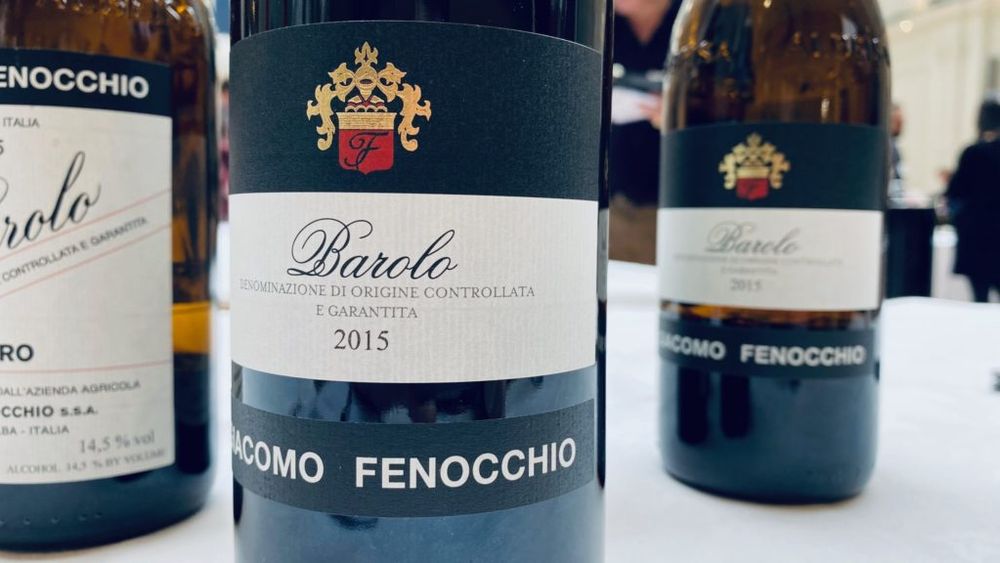
Giacomo Fenocchio Barolo 2015, Piemonte, organic practices (DPD £23)
A family-run winery dating back to 1894, 5th generation owner Claudio Fenocchio took over in 1989 and rejected the move of others in Monforte D’Alba to follow the high points scores won by fast extractions and loads of new oak. Nebbiolo is softer and more subtle than that. You be good to it, and it’ll be very good to you. Claudio steadfastly stuck to long skin contacts and Slavonian oak botti, and he’s been proven right as the terroir continues to shine through, a comforting luxury constant in the face of ever-changing consumer preference.
There were two wines on the table. The higher end Barolo from the Villero vineyard was beautiful, but I plumped for the “entry level” Barolo which still had loads of fresh cherry, strawberry, and basil leaf, but it was the medicinal aniseed note that freshened it up, and freshened the mouth up in the face of the famous Nebbiolo tannins. A superb wine and the 2015, in stock, is drinking well now.
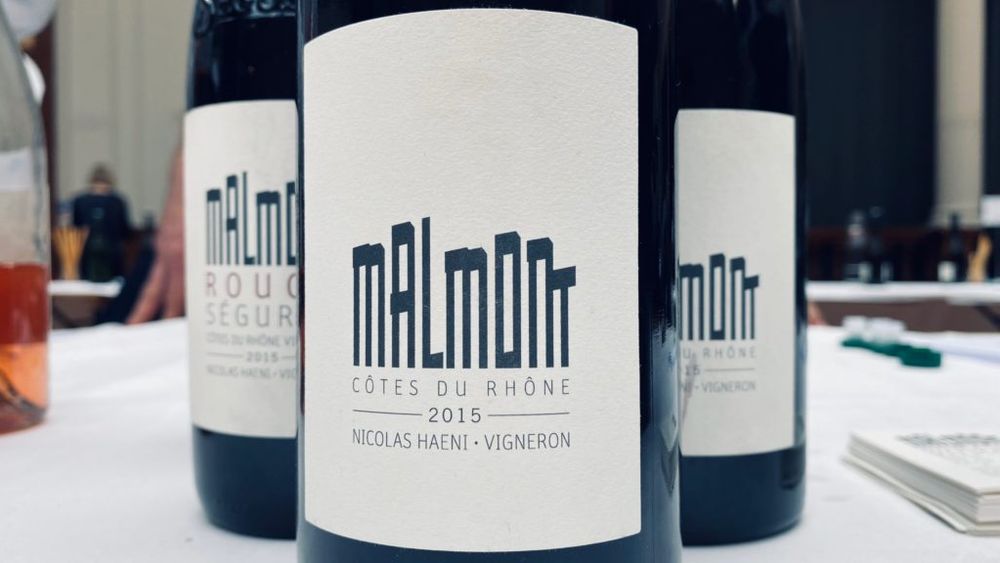
Malmont Côtes du Rhône 2015, Southern Rhône, France, biodynamic (DPD £12.95)
So this is from Nicolas from the masterclass I spoke about earlier on. Interestingly enough he brought all of his wines except this one to the masterclass, so he made me traipse all the way over to his table to try it. I’m glad I did. Originally from Gigondas, he moved to Séguret a few years back and began terracing the steep, rocky hillsides. He now practices biodynamic viticulture in blissful isolation, with few neighbours in the vicinity to infect his vines with windswept sprays.
I treat Côtes du Rhône producers a bit like Indian restaurants. I go in, try the lamb rogan josh, if they nail that then I know they’re good, and I’ll be back to try the rest of the menu. Same deal here. If your entry level Côtes du Rhône is good then I’m sold. Nicolas’ is brilliant, with that telltale biodynamic vibrancy to the purple colour, coating mouthfeel, warming alcohol, dark plums and nutmeg, and well balanced acidity.
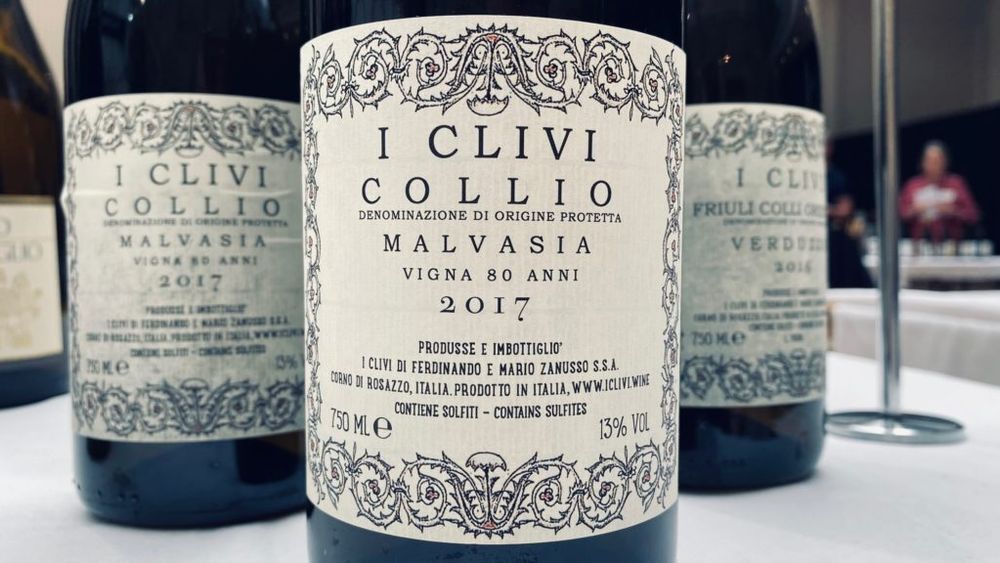
I Clivi Malvasia 2017, Collio, Italy, organic & biodynamic (DPD £15.25)
One of the most underrated white-producing regions in the world, once you start scratching the surface of Collio you find sheer epic-ness on quite a large scale! I Clivi has been one of the more famous producers since they started in the early 1990s. They took over existing vineyards and introduced biodynamic viticulture early on. The result is aged vines with a new lease of life giving huge complexity and length of finish.
About three quarters of its output are white wines, with Friulano the main grape, but I wanted to highlight the Malvasia. Packed full of sweet spice, almonds, and cooked apples, the sea influence from the Adriatic flowing up the valleys gives a refreshing saline minerality balancing this out beautifully. I loved it!
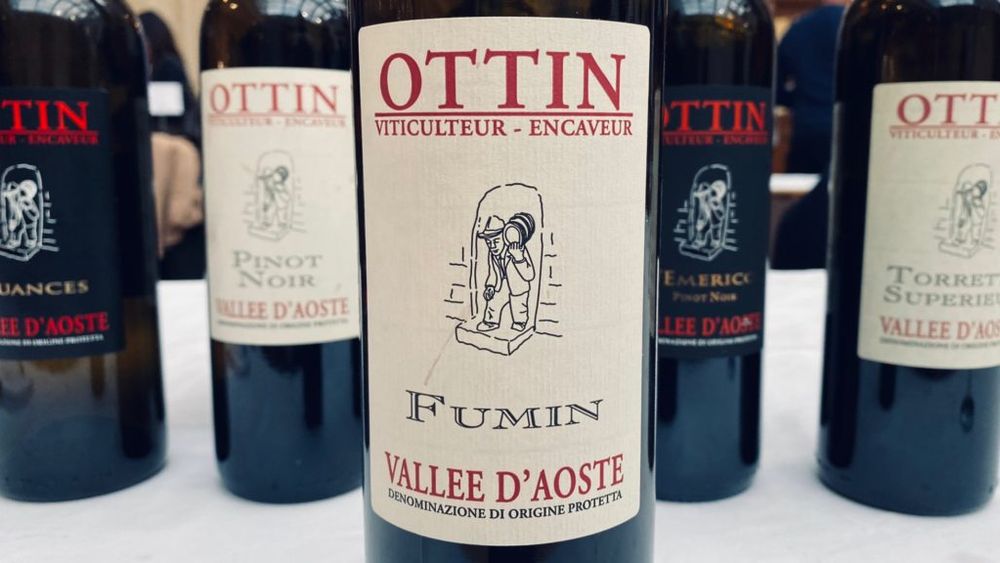
Elio Ottin Fumin 2015, Aosta Valley, Italy, organic (DPD £15.95)
OK, this one is kind of the wildcard of the selection. The Valle D’Aosta is better known for its ski resorts than its wineries, but since Elio Ottin stopped selling his grapes to the local co-op and started his own operations in 2007 the awards haven’t stopped flooding in. Based 600m above sea level on steep, south facing, sun drenched slopes and some fun local varieties. Look, let’s have it right, the price might be an issue, at north of £25 RRP, but these wines rarely leave the chalets and ski resorts, so pop it down as a well made curiosity and the wine geeks will have a go.
I really enjoyed the Pinot Noir they make, but if we’re going down the route of curiosities, then let’s go for the Fumin. Fresh and medium bodied, it tastes like where it’s from. Loads of violet petal, ripe red plums and blueberries, but with a strong herbal and pine forest aroma throughout. Where’s my raclette board?
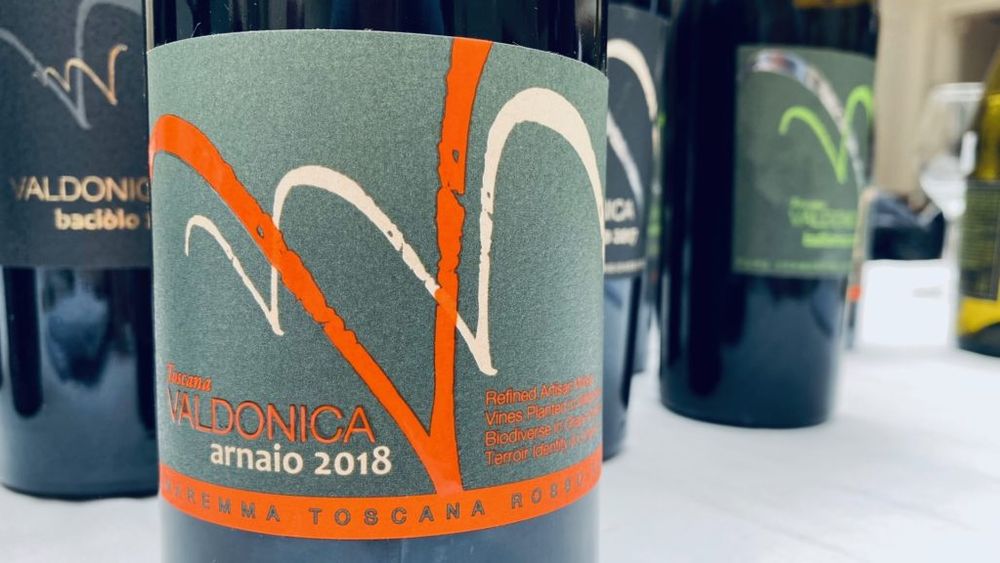
Valdonica Arnaio 2018, Tuscany, Italy, organic (DPD £10.95)
Another one new to the Flint portfolio, this Tuscany based winery is proudly presented by Austrian owner and ex-medical doctor, the charming Dr Martin Kerres. About 20 years ago he made a slight error, heading out to Italy looking for a holiday home and coming back with a hundred hectare estate. It happens I guess?!
Planting began in 2010, on virgin soils, and viticulture has been organic from the outset. He is one of the few producers going that can claim his soils have never seen any agrochemicals. At 500m up, this is one of the highest areas for Sangiovese in Tuscany, and it shows throughout a very fresh range.
I picked out the 2018 Arnaio, something Martin called his ‘everyday drinker’. Mostly Sangiovese, with a hint of local variety Ciliegiolo, it was fresh, fruity, loads of ripe strawberry and raspberry, and some lifting herbal basil and tomato leaf. This would be an excellent lunch or afternoon wine as the summer months come in.
































